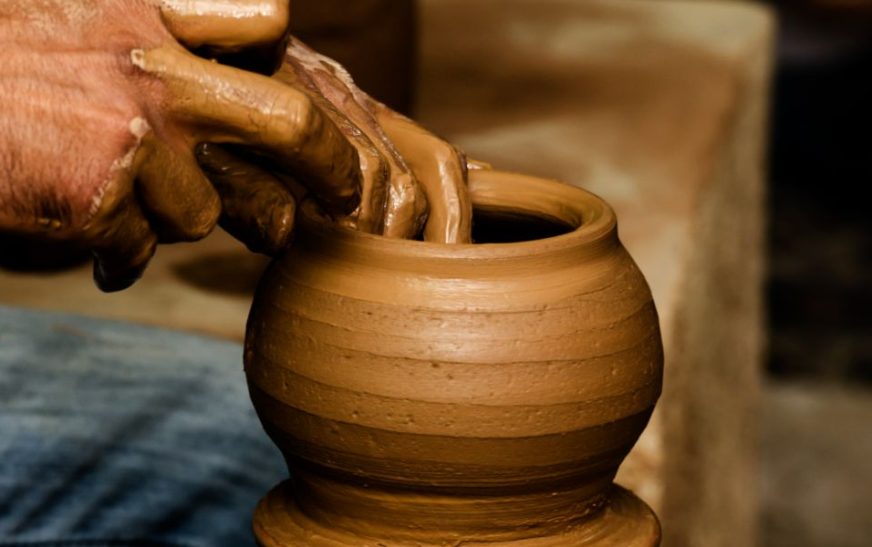In the realm of creative expression, the worlds of sculpture and pottery converge in a fascinating fusion of artistry and craftsmanship. We delve into the distinctions and commonalities between these two forms of artistic endeavor, exploring how they have found a new home in the digital landscape.
Sculpture and Pottery: A Delicate Balance
Sculpture and pottery, both celebrated for their rich history and artistic value, share a symbiotic relationship. While they are distinct in their approach, they both harness the power of precision and creativity. Sculpture takes shape through the meticulous carving of materials like wood, stone, or metal, transforming them into intricate 3D forms that convey powerful narratives. Pottery, on the other hand, is the art of shaping clay into functional and decorative objects. The precision of pottery lies in the delicate hands of the potter, who sculpts clay into vessels, dishes, and decorative pieces. The artistry in both forms is undeniable, but the medium and intent differ.
The Online Resurgence
In the age of the internet, art is no longer confined to galleries and studios. It has migrated to digital spaces, bringing artists and enthusiasts together from all corners of the world. Sculptors and potters now find a virtual haven to showcase their creations and connect with a global audience.
Sculpture Online
Sculpture has found a vibrant online community, with artists and collectors using websites and social media platforms to share their work. Digital sculpting tools have made it easier to craft and visualize complex pieces, and online marketplaces provide a platform for artists to sell their creations.
Pottery Online
Pottery has witnessed a similar transformation. Online tutorials, workshops, and marketplaces have allowed potters to share their skills and creations. The digital realm has expanded the horizons for pottery enthusiasts, enabling them to explore new techniques and connect with like-minded individuals.
The Difference: Sculpture vs. Pottery
Understanding the nuances that set sculpture and pottery apart is crucial for appreciating the beauty of each art form.
Material and Purpose
Sculpture primarily employs materials like marble, bronze, or wood. The purpose often leans towards artistic expression or commemoration, with sculptures often adorning public spaces. Pottery revolves around clay as its primary material and serves a more functional purpose. It includes items like vases, bowls, and dishes, created for everyday use or as decorative elements in homes.
Technique and Process
Sculpture relies on the meticulous carving, chiseling, and molding of materials. Artists shape and refine their creations with precision, often requiring an in-depth knowledge of anatomy and form. Pottery is shaped on a potter’s wheel or through hand-building techniques. The process is as much about the transformation of the clay as it is about the artist’s vision. It’s a craft that demands patience and finesse.
The Online Renaissance
The online resurgence of sculpture and pottery has sparked new life into these art forms. Artists can now reach a global audience, find inspiration in diverse cultures, and learn from fellow artisans worldwide. This digital evolution has opened doors for collaborations and innovations, enabling a cross-pollination of ideas.
Final Words
As sculpture and pottery meet precision in the digital world, the creative possibilities are boundless. These art forms, once rooted in tradition, now flourish in the digital landscape, with artists pushing the boundaries of what is possible. The beauty of sculpture and pottery lies not only in the precision with which they are crafted but also in the stories they tell and the emotions they evoke. Join the online movement and witness the fusion of tradition and technology as we explore new horizons in art.
Commonly Asked Questions
Q1: What tools do digital sculptors use to create their art online?
Digital sculptors utilize software like ZBrush, Blender, and Mudbox, which provide a virtual canvas for them to mold and shape their creations.
Q2: Are online pottery classes as effective as traditional in-person classes?
Online pottery classes have proven to be highly effective, offering convenience and a wealth of resources for learners. The key is finding a reputable instructor and practicing consistently.
Q3: How can I start selling my sculptures or pottery online?
To sell your art online, you can use platforms like Etsy, eBay, or your website. High-quality images, detailed descriptions, and effective marketing are essential for success.
Q4: What are some famous sculptures and pottery pieces that have gained recognition online?
Online platforms have brought attention to various pieces, such as Michelangelo’s “David” in sculpture and unique pottery designs by contemporary artists like Grayson Perry.
Q5: Is there a community for online sculpture and pottery enthusiasts?
Yes, there are vibrant online communities on social media and dedicated forums where artists and enthusiasts share their work, tips, and experiences, fostering a sense of belonging and camaraderie.


























